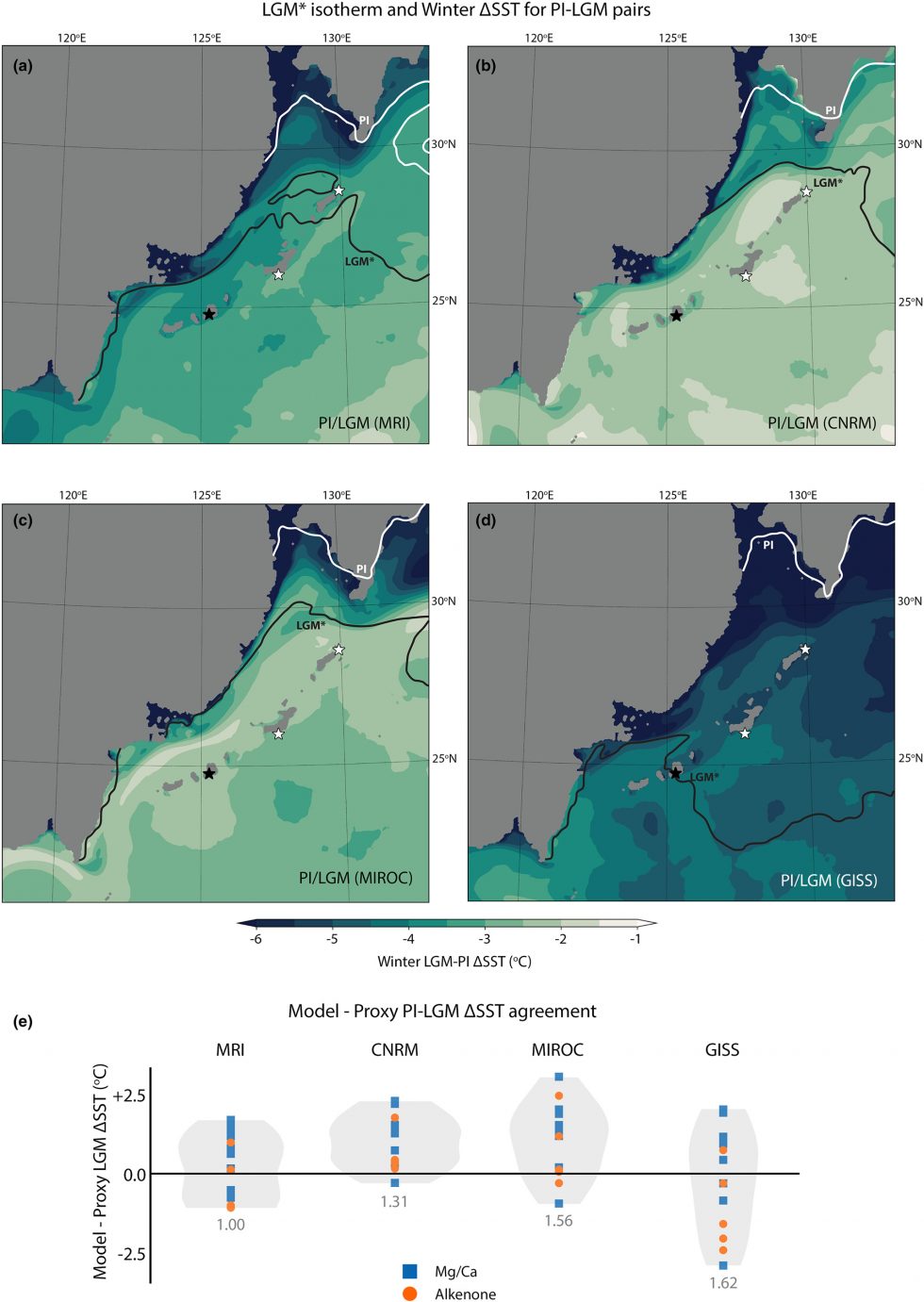Research Projects
Coral reef connectivity in the western Indian Ocean
As with most tropical reef systems, coral reefs in the western Indian Ocean are under severe threat from anthropogenic stressors such as climate change. However, not all coral reefs are equally as vulnerable to environmental change, and one parameter that may be important is reef connectivity. Larvae from broadcasting corals can be swept over significant distances through ocean currents, facilitating the exchange of coral larvae between distal reef sites and potentially playing an important role in maintaining reef resilience. To assess the connectivity (including temporal variability and physical oceanographic drivers thereof) of coral reefs across the southwestern Indian Ocean, we have combined high-resolution (2km) multidecadal simulations of ocean currents spanning almost all coral reefs in the region, with a biological particle tracking model. We will compare results from these simulations to estimates of coral population connectivity from coral population genetics across Seychelles to identify keystone reefs for marine spatial planning efforts, and to determine the physical and biological factors controlling reef connectivity in this region.
One year of sea-surface temperatures from the climatological run of WINDS (Western Indian Ocean Simulation, see here).
Marine debris attribution for remote islands
Enormous quantities of marine debris are beaching on the shores of remote islands in the western Indian Ocean, despite negligible local sources of pollution. For instance, over 500 tonnes of debris has accumulated on the shores of Aldabra Atoll, Seychelles, a World Heritage Site with no permanent population. Identifying the sources of debris beaching on these remote islands is challenging as observations are sparse and limited to the subset of beaching debris with provenance indicators such as intact labels. By carrying out a set of large-scale dispersal experiments with plastic sources from coasts, rivers, and fisheries, we have predicted the key sources of marine debris accumulating at remote western Indian Ocean islands. Comparison of our results with observations across Seychelles suggests that debris discarded from shipping traffic passing through the western Indian Ocean may be a major source of debris for remote islands in Seychelles such as Aldabra. Our simulations also suggest that debris accumulation is likely to be strongly seasonal at most islands in the western Indian Ocean, with debris accumulation peaking during the northeast monsoon.
This study (along with associated data and scripts) was published in Marine Pollution Bulletin.
Four years of simulated marine debris concentrations at the sea surface, based on a physical scenario driven by surface currents, Stokes drift, and 1% windage.
Recent evolution of the Ryukyu Arc Coral Reef Front
In the present day, the Kuroshio Current (the western boundary current of the North Pacific Subtropical Gyre) flows through the East China Sea, alon the northwestern flank of the Ryukyu Island Arc. The Kuroshio Current is associated with a large heat transport, elevating surface temperatures in the East China Sea. As a result, southern Japan is home to amongst the northernmost warm water coral reefs on Earth. However, during the Last Glacial Maximum (LGM) around 20,000 years ago, the Earth was cooler than the present and sea-level fell due to the formation of expansive ice sheets across Eurasia and North America. It has previously been suggested that this fall in sea-level may have obstructed the Kuroshio Current from entering the East China Sea, which would have had severe implications for the habitability of the East China Sea for coral reefs during the LGM.
Through an ensemble of high-resolution ocean simulations with LGM boundary conditions (from the PMIP3 project), we found that the present-day path of the Kuroshio is robust with respect to absolute and relative sea-level changes associated with glacial-interglacial climate change and tectonics. In other words, we do not believe that a diverted Kuroshio at the LGM is physically consistent. We also found that simulations with the best model-proxy agreement predicted the least contraction of the coral reef habitable range (insofar as sea-surface temperature is concerned), suggesting that much of the East China Sea may have remained habitable for coral reefs during the LGM. This lends support to recent seismic evidence for glacial-aged coral reefs in the northern Ryukyu Islands. We also found that the Kuroshio Current axis shifted towards the Ryukyu Arc in our simulations, which may have promoted poleward larval dispersal and improved reef resilience at the coral reef front during this time of environmental stress.
This study was published in Paleoceanography and Paleoclimatology.

Estimates of the LGM coral reef front (black line) compared to the pre-industrial coral reef front (white line) in the four members of our ensemble, compared to confirmed (black star) and suspected (white stars) LGM reefs. The bottom pannel shows the model-proxy agreement for SST in each ensemble member.
